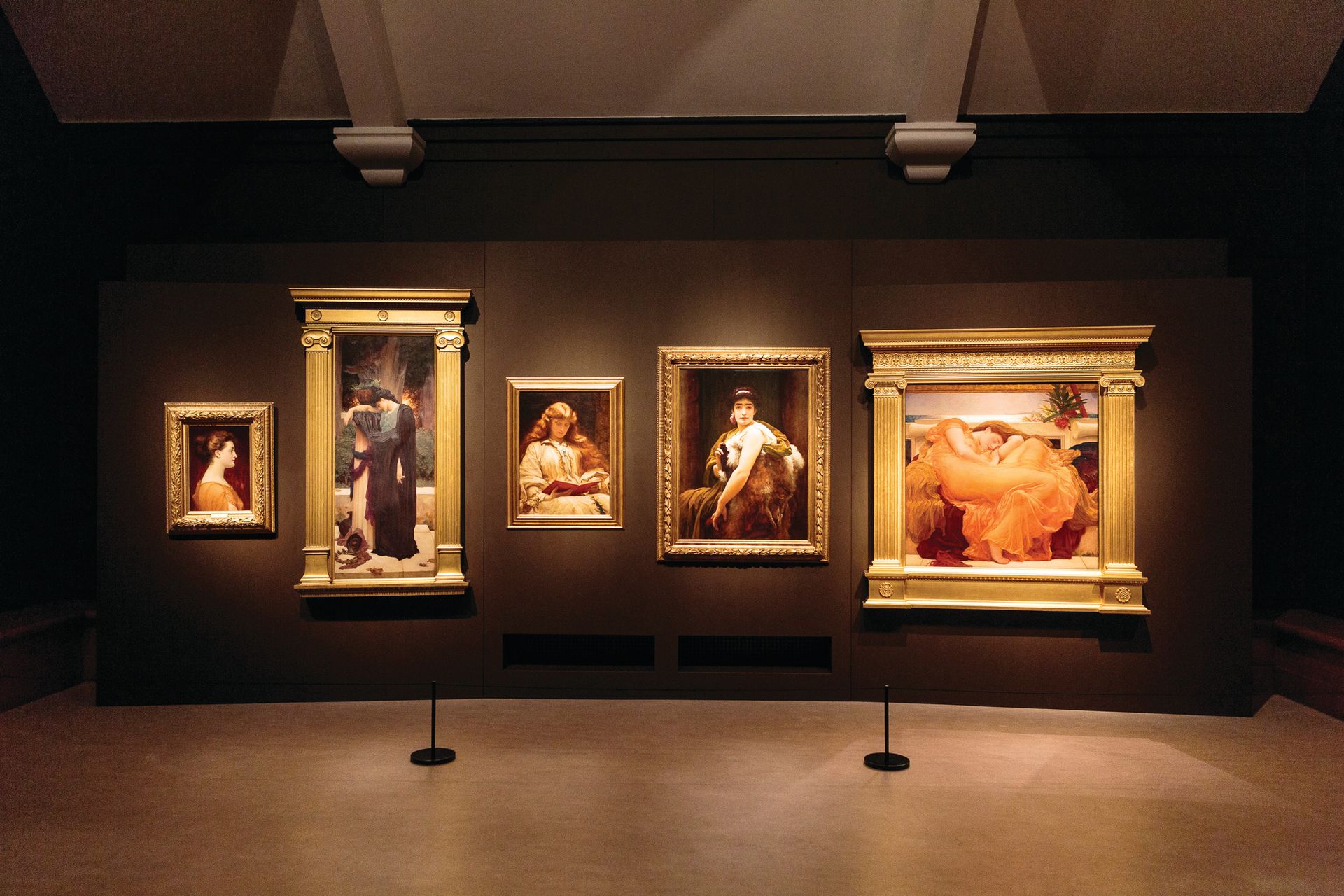Flaming June, arguably the best-known painting by Frederic Leighton, is going on show tomorrow (4 November) at the Victorian artist’s former home and studio in west London for the first time since 1930. The much-reproduced square canvas of a red-headed woman slumbering in a sheer orange dress has travelled to Leighton House Museum from the Museo de Arte de Ponce in Puerto Rico. The exhibition Flaming June: the Making of an Icon (until 2 April 2017) partially recreates the line-up for Leighton’s final submission to the Royal Academy of Arts—where Flaming June divided contemporary critics—before his death in January 1896.
The picture was but one of six paintings created by Leighton, the Royal Academy’s president from 1878, for the summer exhibition of 1895. He gave friends and guests, including the Prince and Princess of Wales, a preview of the set on Show Sunday, the day that fashionable artists in London traditionally opened their studios. A rare historical photograph of that display sparked the idea behind the exhibition, says Leighton House’s senior curator, Daniel Robbins. He has assembled five of the six works from the artist’s original installation: Flaming June (1895); Lachrymae (1895), from the Metropolitan Museum of Art in New York; and ‘Twixt Hope and Fear, The Maid with the Golden Hair and Candida (all around 1894-95), which have been in private hands since the 19th century. (Curators could not trace the sixth piece, A Study, or Listener, the painting that Leighton sent to the Royal Academy in place of Candida.)

The exhibition aims to reveal the context behind Flaming June’s creation and only gradual rise to fame, Robbins says. Preparatory drawings from the museum’s collection and the Royal Academy illustrate the methodical process by which Leighton refined the figure’s circular pose and developed the composition over a number of years, while wall texts recount its unpromising reception and provenance.
The painting’s first buyer, the owner of the illustrated newspaper The Graphic, immediately recognised its popular appeal by issuing free print reproductions to readers for Christmas 1895. Flaming June was briefly shown at the then-new Leighton House Museum for the artist’s centenary in 1930 and then disappeared for decades. In 1962, the work resurfaced at a framers’ shop, delivered by a builder who claimed to have rescued it from a hidden panel in a house due for demolition. The composer and collector Andrew Lloyd Webber later regretted not buying it as a teenager for £50 (his grandmother refused to lend him the £5 he needed). Flaming June changed hands several times—and was refused by a series of British museums—before Luis Ferré, the founder of the Museo de Arte de Ponce, snapped it up for £2,000.
The Puerto Rico institution allows its star exhibit to travel “rarely and only in extraordinary circumstances”, says the director Alejandra Peña in a statement. The painting previously appeared in London at Tate Britain in 2008 and at the Frick Collection in New York last summer. “This project is clearly a once-in-a-lifetime opportunity, and our museum is happy to collaborate with Leighton House to organise exhibitions in London and in Ponce that will surely heighten Leighton’s standing and international reputation,” Peña says. Leighton House is due to send around 20 of its paintings, sculptures and drawings to the Museo de Arte in 2017. Flaming June: the Making of an Icon is sponsored by Investec Wealth & Investment.

